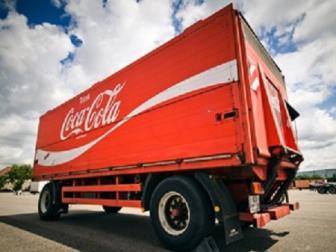
By Mark Lee Welcome to the first post from SustainAbility''s Changing Tack blog on GreenBiz.com. While a number of SustainAbility team members have written for this site before, we are newly committed to regular contributions under the Changing Tack banner, and delighted the GreenBiz team invited us to do so. A quick word o n the blog header feels appropriate this first time out. The sustainability field is young and dynamic: Adaptability and continuous quick learning are prerequisites for those who would lead this largely uncharted journey. So Changing Tack will explore the evolution of knowledge and skill needed to advance and accelerate progress, as well as the constant shifts in direction (in this case, business practice) necessary to reach a destination when conditions are variable. Where possible, we will illustrate our thinking with examples from SustainAbility''s think tank research, consulting portfolio and other real world experience. First Up: Coca-Cola Enterprises While in London in late September, I attended the release of Coca-Cola Enterprises'' (CCE) Sustainability Plan. Titled Deliver for Today: Inspire for Tomorrow, the plan represents a major step forward for the company. The launch was silky smooth — an in-studio event filmed at The Hospital Club in London''s Covent Garden, kicked off by CCE''s CEO John Brock, featuring a panel of accomplished business and NGO leaders assembled to assess the plan that was moderated by Catherine Cameron of the University of Cambridge Programme for Sustainability Leadership, and all unfolding in front of an expert audience containing the likes of Marks & Spencer Chairman Robert Swannell and Two Tomorrows Executive Chairman Mark Line. The full plan and video of the September 28 proceedings are available at the CCE plan link above and repeated here. Headline commitments target Energy & Climate Change ("we will reduce the carbon footprint of the drink in your hand by a third [by 2020]") and Sustainable Packaging & Recycling ("we will set the standard for sustainable packaging, achieve zero waste in our operations and recycle more packaging than we use"). If you want, you can find all the commitments here. But I write about the plan and the event assuming most readers, even at GreenBiz.com, did not notice the unveiling. Why didn''t more people pay attention, and how should we assess the CCE plan''s potential impact? Leading from the Middle We expect sustainability leadership from organizations at the extreme ends of value chains — from retailers who dictate to suppliers that a more sustainable offering will be made available to consumers, or from suppliers who have the opportunity to shape what materials enter marketplaces, like farmers who switch to organic. But leadership from the middle of the value chain is less common and less understood. While Coca-Cola Enterprises shares naming rights with one of the world''s most powerful brands, it''s simply not the Coca-Cola Company of Atlanta, Georgia with whom we most associate Coke and other offerings — and we don''t pay adequate attention to the myriad brands and organizations between sourcing origins and top consumer brands. Creatures of Context Peter Madden, Chief Executive of Forum for the Future, says Forum has framed their new strategy in terms of system innovation (watch the short animation here) because all organizations are "creatures of context," unable to make existing business models sustainable unless the system changes too. So Coca-Cola Enterprises'' Sustainability Plan is critical to moving the entire value chain of which they are part — and how far CCE can go is limited by others'' willingness to shift. Ambitious Enough? I had to think through CCE''s Energy and Climate Change commitment twice (kudos to you if you realized immediately it''s not an absolute target). Once you get into the details, you find the one-third reduction in "the carbon footprint of the drink in your hand" by end decade is coupled with an aim to reduce CCE''s absolute emissions by 15 percent in the same timeframe. Allowing for growth, this is undoubtedly a stretch target, beyond what most companies will pledge, and ahead of nearly all regulation. But the science says we must see absolute cuts in emissions of 80-90 percent by mid-century. While we consider whether to applaud or dismiss CCE''s goal in this light, it is useful to remember the "creatures of context" mantra. Through that lens, CCE''s effort looks to put it in a leadership position (from which they might accelerate if business benefits accumulate or if carbon taxes appear), and aggressive enough to goad the thinking and actions of business partners, but not so radical that anyone can dismiss the ambition as unrealistic — for CCE, or for suppliers when CCE asks them to help meet pass the test. Collaborate, then Compete I asked panel members Joe Franses, Head of Corporate Responsibility and Sustainability at CCE, and Mike Barry, Head of Sustainable Business at Marks & Spencer, which sustainability issues are best treated as pre-competitive and which lend themselves to establishing and maintaining competitive advantage. Their reply emphasized the collaborative approach business will need to take in the quest to solve sustainability challenges, suggesting we need "common standards back of house" and vigorous competition on "implementation and communication front of house." CCE''s Sustainability Plan feels like it positions them well for both — sufficiently differentiating while clearly dependent on suppliers and partner support to succeed. How will the creatures of their context respond? And how essential is leadership from the middle to accelerating progress across the value chain as a whole?
Article courtesy of greenbiz.com

